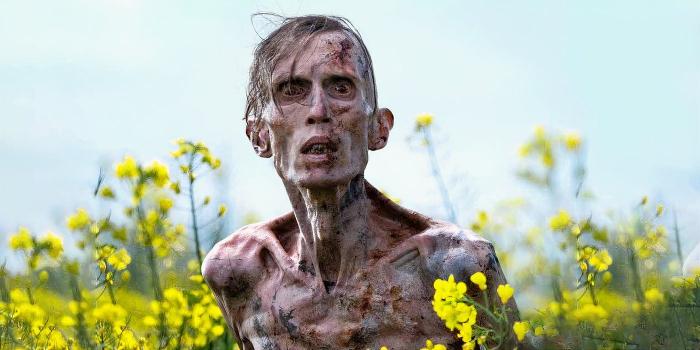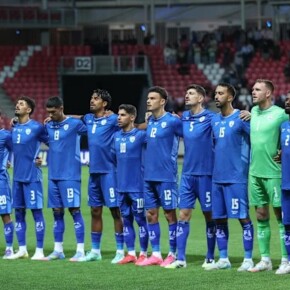28 Years Later brings the zombie movie back to life
Mike Finnerty 20 Jun 2025
Cillian Murphy walking around the empty streets of London in 28 Days Later is one of the iconic images of modern-day cinema.
Released in 2002, Danny Boyle’s film revolutionised the zombie genre after George Romero invented it in the 1960s, and it was the final nail in the coffin for the slasher genre invented by John Carpenter and Wes Craven.
The franchise has been dormant since 2007’s inferior sequel, 28 Weeks Later, but a lot has happened since then.
Danny Boyle and Alex Garland have never been shy about injecting real-world politics and subtext into their stories, and they have a hell of a lot to work with now; a Britain outside of the European Union, a real-world global pandemic, and a general sense of doom and gloom.
In other words, June 2025 is the ideal time to release 28 Years Later.
We suspect people would have loved this film in any capacity – yay, more fast zombies! – but what 28 Years Later does is truly extraordinary.
After Britain got thoroughly zombified in the first movie, 28 Weeks Later was a valiant attempt at showing life after a devastating virus tore through a country and the living are outnumbered by the dead (who can run really fast).
28 Weeks Later was a valiant attempt, but it was missing Danny Boyle’s deft touch and Alex Garland’s cynical worldview.
With 28 Years Later, Boyle and Garland are back (after some time apart,) and the duo have knocked it out of the park.
In the time since he directed 28 Years Later, Boyle has become an Oscar-winning director for Slumdog Millionaire and has been on the cutting edge of camera and editing techniques as shown in films like Steve Jobs (his masterwork), 2017’s T2 Trainspotting and the TV series Pistol.
Alex Garland, meanwhile, has struck out by himself to become a director of films that have a lot going for them technically, but the scripts leave a lot to be desired.
28 Years Later proves that Boyle and Garland need each other, and they bring out their best when they work together.
Boyle’s direction work on this film is some of the best of his career; over 30 years since Shallow Grave rocked audiences with its frenetic, nearly techno-inspired direction, he’s still up to his same tricks.
28 Days Later was notable for being shot on digital video in 2002, which was an intentional choice; Boyle and his cinematographer Anthony Dod Mantle wanted to make the film look like it was shot on a camcorder.
The camcorder, grainy style lent 28 Days Later so much of its raw power and scariness; we are pleased to report they have one-upped themselves.
The big trick with 28 Years Later is a good chunk of the film being shot on iPhones.
Steven Soderbergh has led the charge in shooting films on iPhones, but what Boyle and Dod Mantle do with iPhones here is nothing short of revolutionary.
Using a high-powered iPhone in the middle of a zombie movie is sheer genius, it lends the film this lived-in quality and crucially, puts you in the characters’ shoes.
We have been harsh critics of Garland’s directorial work (as recently as April, we took Warfare to task for having all the depth of a puddle), but his script here is the most on-point and focused he has been in years.
Boyle and Garland are both opposite sides of the same coin and the push and pull between them makes the film really sing.
Boyle brings in the cheeky, Irish energy (singalongs in pubs, treating death as something to be embraced and not feared) while Garland offers his big ideas about what happens to society when the social contract is torn up.
28 Years Later takes place on a small island off Northumberland, showing that British society has survived but is stuck as it was in 2002.
It’s a fantastic hook for a sequel, and the film has a lot of fun with this.
There is a primitive feeling to life on the island; the kids learn how to use bow and arrows, as far as they know, Queen Elizabeth is still the monarch in charge and no one can get a packet of Nurofen.
At the crux of the film is a young boy named Spike, who is now old enough to visit the mainland.
Spike is played by newcomer Alfie Williams, and he continues the proud Boyle tradition of the director always getting the best out of child actors.
His father, played by a rarely-better Aaron Taylor-Johnson, shows Spike the ropes and teaches him how to take care of the infected and the rules of the mainland.
His mother, played by Jodie Comer, has been struck down by a mysterious illness that causes memory loss, and without doctors or medicine, her condition is worsening (yet, she still has time to speak in a fantastic Geordie accent, howay the lads!).
A great supporting cast, including a brilliant Ralph Fiennes in a role we won’t spoil, helps round out what is already a strong starting point.
Just like how the original 28 Days Later reinvented the zombie archetype (that movie’s big USP: the zombies are fast now), 28 Years Later adds another twist; after so long in the wilderness, the zombies have started to degrade, and all those years in the elements have changed them.
It’s a subtly terrifying detail, but it adds so much detail and colour to the world.
In all those years, the zombies have evolved; one of the films many highpoints comes during an encounter with a man mountain zombie, an evolved zombie that is dubbed “Alpha.”
After years of zombies being cannon fodder in countless movies, TV shows and video games, Boyle and Garland make zombies scary again.
After some high-profile franchise disappointments this year, 28 Years Later is a genuinely brilliant film in an already strong franchise.
Garland’s dabbling in video game writing has paid off; there is a clear A to B plot, characters see a landmark in the distance, they approach it, and advance the story.
The ending, without going into spoiler territory, is one of the barmiest sequel hooks we’ve seen in a film for quite some time.
It kills us we have to wait until next year to find out what happens next, but that’s what a great movie should do – leave you wanting more.
In truth, we could have gladly watched a 6-hour version of this – give us The Brutalist but with zombies! – but what we have is brilliant.
Run, don’t walk, to this one.











